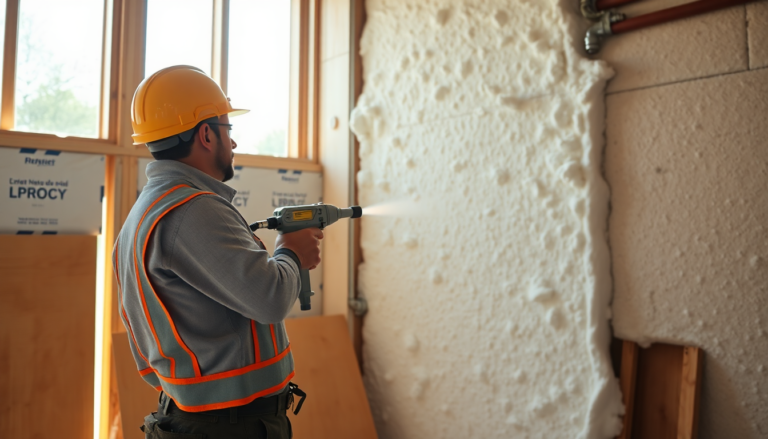Argomenti trattati
When it comes to insulation technology, open-cell spray foams are shaking things up. They’re not just another insulation option; they represent a major leap forward in energy efficiency and ease of installation. Thanks to innovative manufacturing processes and advanced chemical formulations, these foams provide outstanding thermal performance and can be customized to fit any space. Curious about how these foams work and what they can do for your home or business? Let’s dive into the different types of open-cell spray foams, their unique advantages, and how they apply to both residential and commercial settings.
Getting to Know Open-Cell Spray Foam Technology
So, what exactly is open-cell spray foam? It’s a lightweight polyurethane product, renowned for its remarkable ability to fill gaps and create a seamless air barrier. Unlike traditional insulation materials that can leave spaces vulnerable, open-cell foam expands upon application, conforming effortlessly to the contours of the area. This not only boosts thermal efficiency but also helps to create a quieter indoor environment by reducing sound transmission. Sounds great, right?
The production of open-cell spray foams is typically carried out in state-of-the-art facilities that meet rigorous quality standards, such as ISO 9001:2015. This certification ensures that every product is manufactured to high-performance criteria. The technological advancements in foam formulation have led to a variety of options, each specifically designed for unique needs and applications.
Exploring Types of Open-Cell Spray Foams and Their Benefits
There’s a world of open-cell spray foam products out there, each offering distinct benefits:
- High-Yield Open-Cell Foam: This formulation boasts superior thermal efficiency, with an impressive R-value of 4.0 per inch. Its design minimizes waste during installation, making it a cost-effective choice for builders.
- Classic Open-Cell Foam: Known for its user-friendly application, this original half-pound foam provides an R-value of 4.2 per inch. It requires no mixing and installs quickly, perfect for projects on tight schedules.
- Ultra-High Yield Open-Cell Foam: Engineered with advanced cell structure technology, this version enhances sprayability and visual appeal. It offers an R-value of 3.8 per inch, ensuring effective insulation without compromising performance.
- Appendix X Open-Cell Foam: Meeting ignition-barrier requirements, this safe choice for various construction projects delivers an R-value of 3.7 per inch, providing peace of mind alongside its insulating properties.
These product variations cater to a wide range of insulation needs, allowing contractors and homeowners to select the most suitable option for their projects. Which one would you choose?
How to Implement Open-Cell Spray Foam in Your Projects
Thinking about using open-cell spray foam for insulation? It’s essential to first assess the specific needs of your space. Factors such as climate, building design, and local building codes should help guide your selection process. Partnering with experienced contractors who understand the ins and outs of spray foam installation can also enhance the overall effectiveness of your insulation.
In practical terms, implementing open-cell spray foam involves several key steps:
- Conduct a thorough assessment of the area to be insulated, pinpointing gaps and potential air leaks.
- Select the appropriate type of foam based on your specific needs identified during the assessment.
- Ensure proper safety measures are in place during installation, including adequate ventilation and protective gear for installers.
- Monitor the installation process to ensure compliance with manufacturer guidelines for optimal performance.
By following these steps, you can maximize the benefits of open-cell spray foam, paving the way for long-term energy savings and enhanced comfort in your building.
Key Performance Indicators and Optimization Strategies
To truly measure the effectiveness of open-cell spray foam insulation, it’s crucial to keep an eye on specific performance indicators. Here are a few to consider:
- R-value: This measures the thermal resistance of the insulation. A higher R-value means better insulating properties.
- Air Leakage Rates: Monitoring air leaks helps determine how effective the installed insulation is and highlights areas for improvement.
- Energy Consumption: Tracking energy usage before and after installation can give you insights into the cost-effectiveness of your insulation solution.
By focusing on these KPIs, building owners can continuously optimize their insulation strategies, ensuring they achieve the desired energy efficiency and comfort levels. Who wouldn’t want a more efficient and comfortable space?

